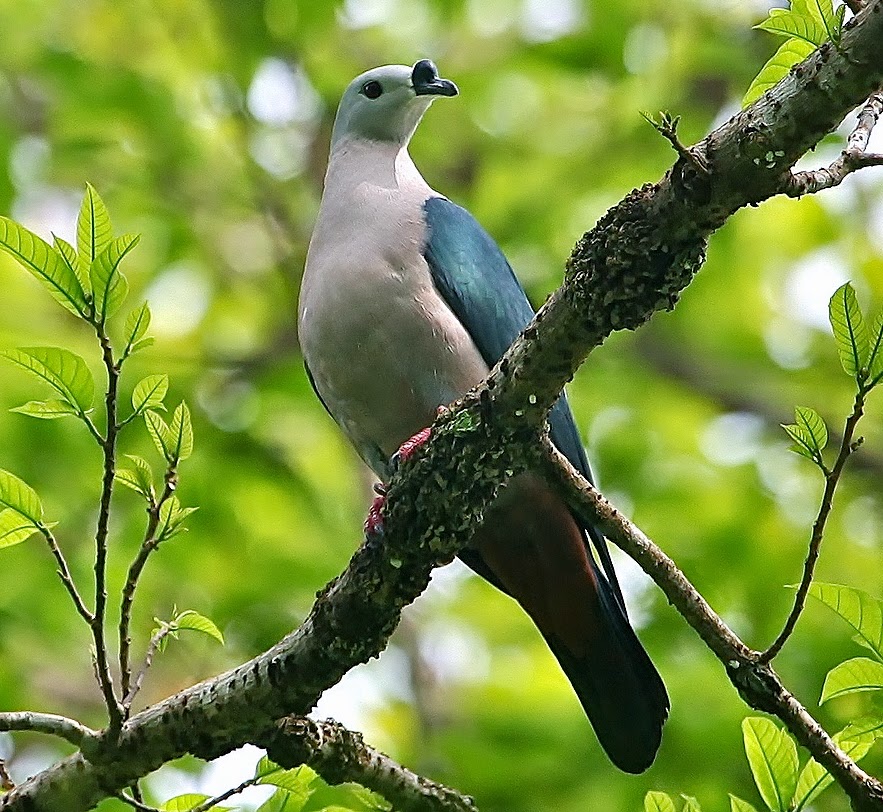 |
| (Photo from Flickr) |
Common name:
Pacific imperial-pigeon (en); pombo-imperial-do-Pacífico (pt); carpophage pacifique (fr); dúcula del Pacífico (es); Tongafruchttaube (de)
Taxonomy:
Order Columbiformes
Family Columbidae
Range:
This species is found in small islands in the Pacific Ocena, from the islands of north-eastern New Guinea, through the Solomon Islands, New Caledonia, Vanuatu and Fiji, and into Tonga, American Samoa and the Cook Islands.
Size:
These birds are 36-41 cm long and weigh 370-420 g.
Habitat:
The Pacific imperial-pigeon is found in moist tropical forests and in scrublands, from sea level up to an altitude of 1.000 m.
Diet:
They feed mainly on fruits, but also take some leaves and flowers.
Breeding:
These birds breed in January-September. The nest is an untidy platform of twigs, with no lining, concealed in the tree canopy 8-25 m above the ground. There the female lays a single white egg, which is incubated for 19-21 days. The chick fledges about 20 days after hatching.
Conservation:
IUCN status – LC (Least Concern)
This species has a relatively large breeding range and is described as common in Papua New Guinea and the Solomon Islands, common to abundant in Vanuatu, uncommon in Tokelau, Niue and American Samoa, rare on New Caledonia and locally common in the Cook Islands. The population is suspected to be in decline owing to ongoing habitat destruction and unsustainable levels of exploitation.







